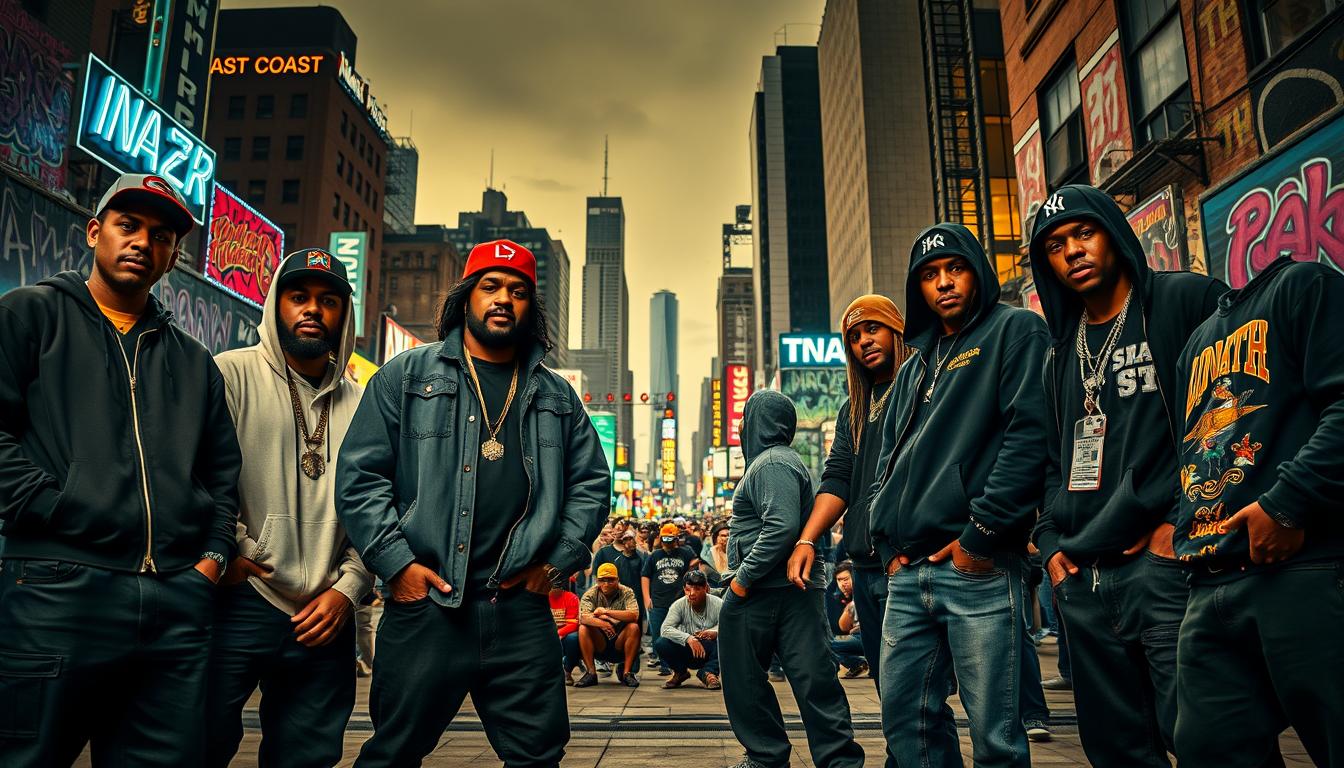East Coast rap never needed to catch up. It built the lane. When DJ Kool Herc threw that party in the Bronx in 1973, the blueprint was set: raw lyricism, no shortcuts, beats that punched like concrete, and stories that hit closer than home. New York was the nucleus. Every borough had a voice. Every verse carried weight.
By the time the 90s cracked open, legends like The Notorious B.I.G., Nas, Wu-Tang Clan, and Jay-Z weren’t just dropping classics-they were setting standards. Every line mattered. Production meant more than a catchy loop. And fans expected more than just a hook.
Even when other regions caught fire, the East Coast kept a firm grip on substance. Nicki Minaj took bars to arenas. Cardi B flipped mixtape heat into global fame. Pop Smoke made Brooklyn drill a worldwide movement before his story got cut short.
Now the new wave is locked in. The underground is hungry. The mainstream is still tuned in. You’ve got veterans releasing with precision, and newcomers dropping projects that demand replay. The sound might shift, but the DNA stays the same.
If you’re watching the charts or combing the crates, there are ten names you need to know right now. They’re not all household names yet-but they’re all pushing the East forward in their own lane.
Let’s get into it.
1. J. Cole
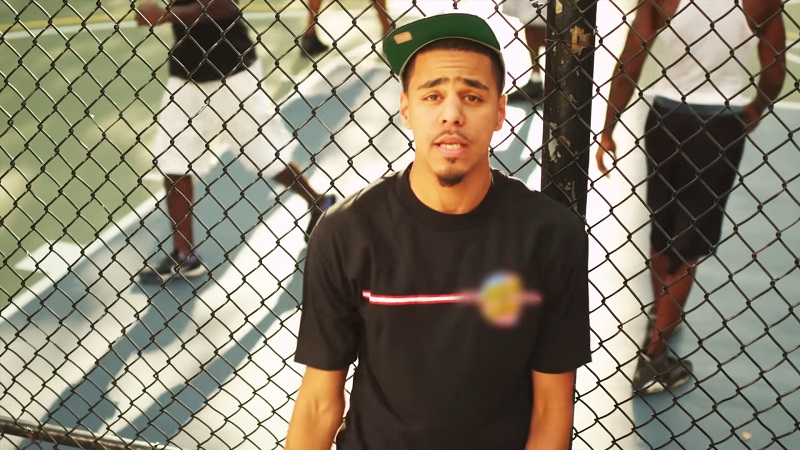
| Origin | Fayetteville, North Carolina |
| Debut Mixtape | The Come Up (2007) |
| Breakout Moment | Signed to Roc Nation in 2009 |
| Studio Albums | 6, including 2014 Forest Hills Drive and The Off-Season |
| Label | Dreamville Records |
| Signature Strength | Narrative-driven lyricism, minimal ego, high concept execution |
Every major rapper has a spark story. J. Cole’s came with silence. Jay-Z walked past his CD the first time. He didn’t throw a fit. He didn’t chase a cosign. He came back the next week. Persistence turned into a record deal. Not because he fit a trend. Because he had an undeniable voice and the patience to sharpen it.
Fayetteville never asked for a rap savior. Cole gave it one anyway. His early mixtapes sounded like a man scribbling bars in a bedroom with one eye on the exit. He never begged the city to love him. He earned every cheer.
His Albums Are Chapters, Not Checklists
There is no throwaway track in J. Cole’s catalog. 2014 Forest Hills Drive played like a memoir trapped in headphones. KOD broke its own rules with every song. The Off-Season pulled in the entire weight of a decade in the game. He didn’t write albums to chase awards. He wrote them to last.
He built Dreamville into a home base for the ignored. His label became a refuge for outliers who never wanted to conform. That is why names like JID, EarthGang, and Bas trust the structure he built. Not for exposure. For integrity.
He Doesn’t Need a Look, He Is the Look
J. Cole doesn’t wear chains. Doesn’t beg radio. Doesn’t drop singles for TikTok. And he still shuts down every stage he walks on. His shows are sermons. The crowd doesn’t sing along. They recite.
He doesn’t feed the hype machine. That silence is intentional. When he speaks, fans know it matters. He isn’t the loudest. He’s the sharpest. And right now, his pen holds the edge.
2. Lil Tjay
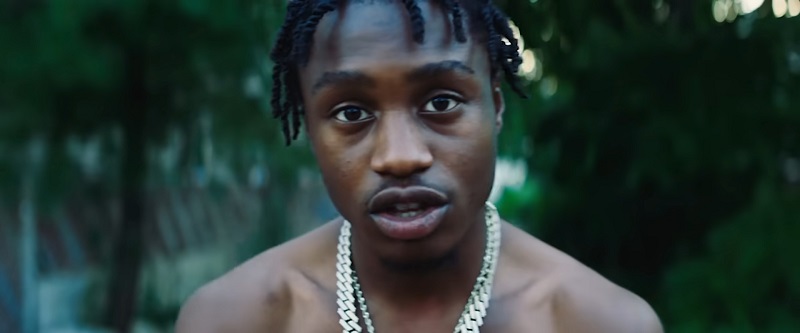
| Origin | Bronx, New York |
| Breakout Track | “Resume” |
| Label | Columbia Records |
| Key Albums | True 2 Myself, Destined 2 Win, 222 |
| Strength | Melodic rap with emotional range |
Lil Tjay never leaned on heavy bars. He turned pain into melody. While most Bronx artists pushed drill, he slowed the tempo, stretched the emotion, and let the beat breathe. His tone stayed soft, but never weak. His voice carried heartbreak without sounding forced. He gave rap fans a different lane to sit with.
The Bronx Is Still In Every Line
He never abandoned his roots. His delivery keeps the tension of the Bronx even when the beat leans mellow. Tracks like “F.N.” or “Leaked” sound like city nights. Not club nights. Street nights. He turned his hometown into a mood without shouting it on every hook.
He Took a Bullet, Then Took the Mic Back
In 2022, he got shot seven times. He dropped “Beat the Odds” right after. No rehab arc. No staged comeback. He went straight back into motion. That track wasn’t built for sympathy. It was built to keep moving.
3. Sheff G
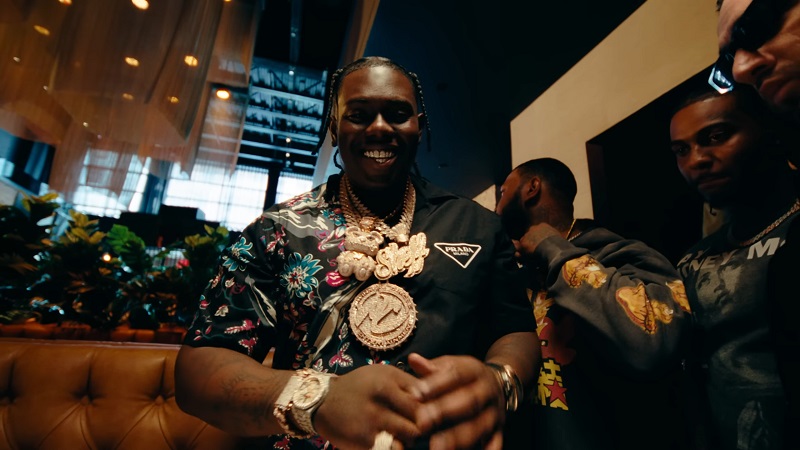
| Origin | Brooklyn, New York |
| Breakout Track | “No Suburban” |
| Collective | Winner’s Circle |
| Influence | Pioneer in Brooklyn drill |
| Signature Sound | Deep bass, aggressive drums, laid-back flow |
Before drill became a trend, Sheff G molded it into a weapon. His breakout hit “No Suburban” dropped in 2017 and flipped the city’s sound. He didn’t just rap over UK-inspired beats-he slowed them down, gave them space, and carved his tone into every pocket.
Lyrical Weight Without Flash
Sheff G doesn’t scream for attention. He speaks like he’s already seen everything. His flow stays calm over beats that could shake glass. That contrast built his identity. When others go loud, he stays low, but the impact cuts deeper.
Crew Loyalty, Zero Gimmicks
With Sleepy Hallow and Eli Fross in the Winner’s Circle, Sheff G stayed loyal to his camp. No label switch-ups. No clout chasing. His movement grew on its own terms. Brooklyn followed because they saw it was real.
4. Toosii
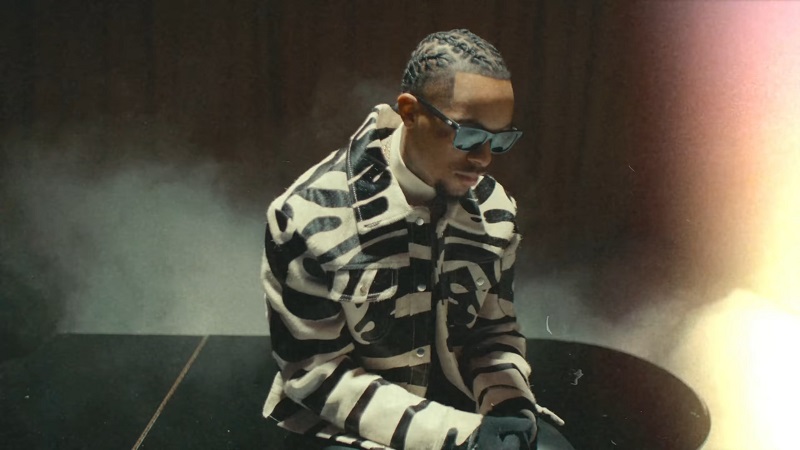
| Origin | Syracuse, New York |
| Breakout Project | Poetic Pain |
| Label | South Coast Music Group / Capitol Records |
| Style | Emotional, melodic, autobiographical |
| Known Singles | “Love Cycle,” “Favorite Song,” “Red Lights” |
Toosii never tried to out-rap anyone. He used vulnerability like armor. His music reads like open letters-soft beats under raw lines that hit personal. He never needed loud metaphors. He gave you the truth with no filter.
Voice Without Borders
He isn’t locked to New York, even though he was born there. His sound grew across the South. But the core is East Coast-direct tone, sharp rhythm, layered feeling. His cadence can float over trap drums or piano loops without losing weight.
A Catalog That Never Wastes a Hook
Toosii writes like every chorus needs to leave a mark. “Favorite Song” proved it. It charted because people kept replaying it, not because a trend pushed it. His work lands when fans want something they can hold longer than a scroll.
5. Rich the Kid
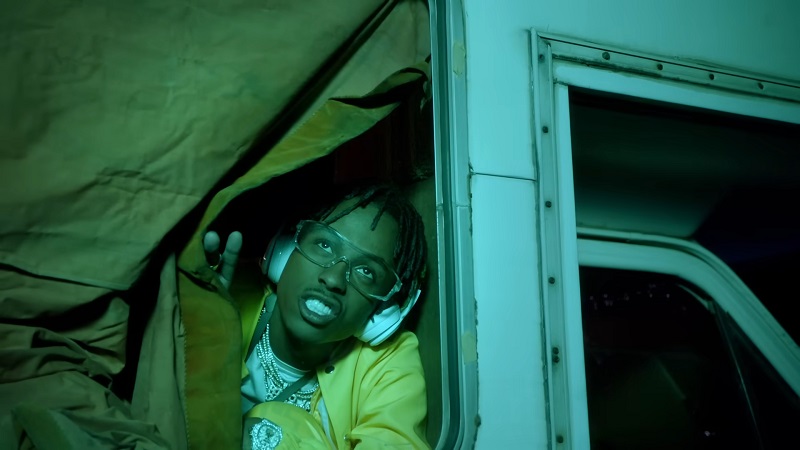
| Origin | Queens, New York |
| Breakout Moment | “Plug Walk” (2018) |
| Label Moves | Interscope → Republic → Rostrum |
| Known For | Trap influence, luxury rap, catchy hooks |
| Collaborators | Kendrick Lamar, Future, Lil Wayne |
Rich the Kid never stayed still. He made his name moving through labels, chasing leverage. Some saw instability. He saw negotiation. When he dropped The World Is Yours, it wasn’t a surprise it went platinum. He had already positioned himself as a name fans had heard too often to ignore.
“Plug Walk” Wasn’t Luck
That single didn’t land by accident. It tapped into one of the cleanest hooks of that year with a beat that looped perfectly. Rich doesn’t overcomplicate. He repeats with rhythm. He lets the beat ride. He knows exactly how long to hold your attention.
Style Is the Product
He raps in diamonds. His look stays loud. He markets lifestyle more than pain. That angle pulls fans in a different way. He isn’t trying to be deep. He’s trying to be undeniable.
6. Hotboii
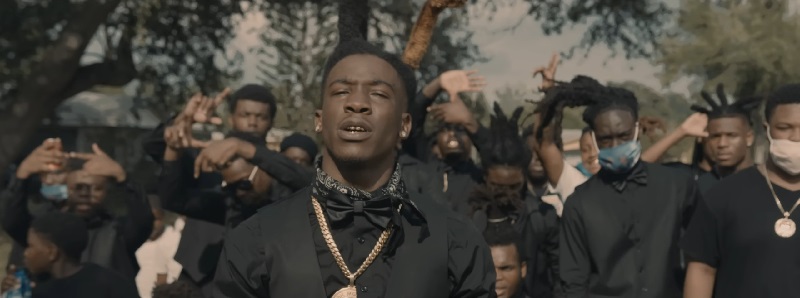
| Ties to East Coast | Strong NYC streaming and fanbase presence |
| Breakout Project | Double O Baby |
| Major Album | Life Of A Hotboii |
| Known Tracks | “Don’t Need Time,” “WTF,” “Live Life Die Faster” |
| Signature Blend | Pain rap with bounce beats |
Hotboii came up fast, but the climb didn’t start in the booth. He did time before doing shows. His songs reflect that edge. You hear experience, not invention. Tracks like “Don’t Need Time” don’t ask for sympathy. They document what it costs to keep going.
A Beat Selection That Hits
He doesn’t stick to slow tempo. His production swings. He can drop heavy pain over guitar loops or slide into bounce-driven drums. Either way, the lyrics stay personal. No punchlines. All scars.
Respect in New York Without a Zip Code
Hotboii never claimed New York. He didn’t need to. The East Coast embraced him anyway. Streaming numbers in NYC put him side by side with hometown artists. His collabs stretch into the region. His name carries weight, even without the borough tag.
7. 22Gz
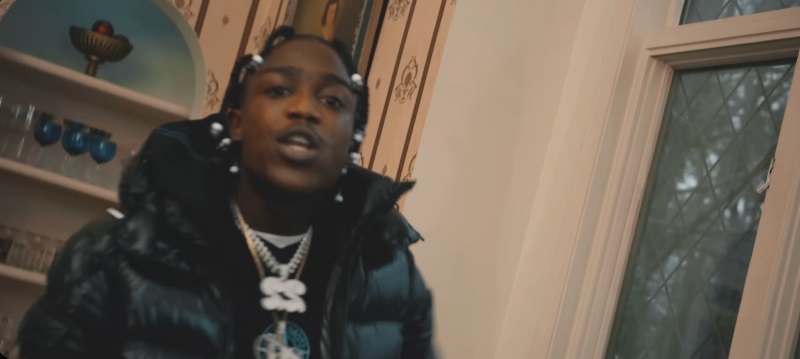
| Origin | Brooklyn, New York |
| Breakout Track | “Suburban” |
| Collective | Blixky Gang |
| Sound | Brooklyn drill pioneer |
| Signature Style | Fast tempo, sharp attack, coded slang |
Before it became marketable, 22Gz had already drawn the lines. “Suburban” laid the foundation. The beat was stripped down. The cadence was unforgiving. He gave Brooklyn drill its first full identity. Others followed the formula. He was the test run.
No Filter, No Detour
22Gz never softened his lyrics. He loaded verses with street-coded language and fast punches. His flow attacked the beat instead of riding it. That sound shaped what drill would become across the borough, even when others grabbed the spotlight.
Industry Attention Without Industry Surrender
He signed to Kodak Black’s Sniper Gang, then dropped The Blixky Tape without shifting his voice. No pop pivot. No commercial bait. He raps for the same crowd that backed him from day one.
8. Kota the Friend
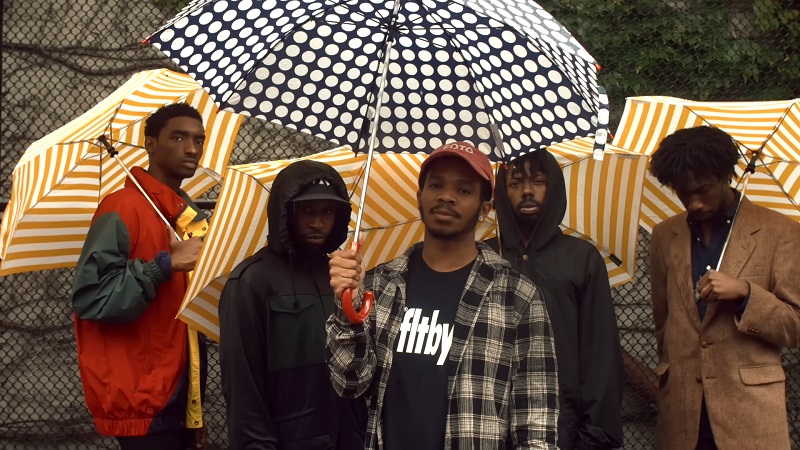
| Origin | Brooklyn, New York |
| Breakout Album | FOTO (2019) |
| Known Projects | Lyrics to GO series, Everything |
| Label Status | Fully independent |
| Signature Traits | Soulful beats, jazz elements, soft-spoken delivery |
Kota the Friend built a fanbase from the ground up. No major label deal. No superstar features. He uploaded tracks. Shot his own videos. Sold merch before Spotify plays hit seven figures. Every step stayed in-house.
His Sound Stays Close to the Chest
You never get shouting. You never get overproduction. He raps in lowercase, with beats that sound like Sunday afternoons. That stripped-back style turns his tracks into quiet victories. Songs like “Church” or “Colorado” land because they don’t try to do too much.
More Than a Rapper, Less Than a Brand
He releases short films. He illustrates album covers. He owns everything he drops. That blend of music and autonomy keeps his listeners locked in. No label deadlines. No market trend shifts. His pace is his own.
9. Rod Wave
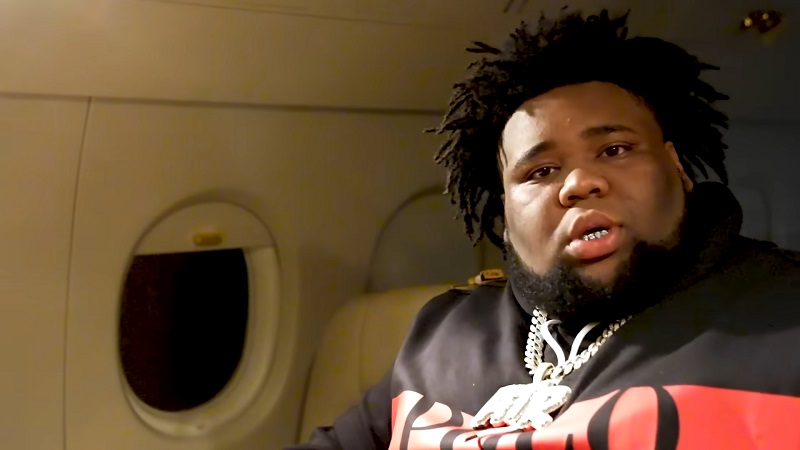
| Origin | St. Petersburg, Florida |
| East Coast Reach | Massive in NYC, Philly, DC markets |
| Known Albums | Pray 4 Love, SoulFly, Nostalgia |
| Viral Singles | “Heart on Ice,” “Tombstone,” “Fight the Feeling” |
| Signature Tone | Pain rap with R&B delivery |
Rod Wave doesn’t rap for applause. He raps through grief. His voice breaks mid-verse. His hooks land like prayers. “Heart on Ice” wasn’t built for playlists. It cracked the algorithm because fans kept replaying it until it caught the world’s ear.
Not from the East, Still in the Circle
He’s a Florida native, but East Coast fans made him core. His music gets heavy rotation in New York. His concerts sell out in Jersey. His albums chart high in D.C. and Boston. That connection comes without gimmicks. The pain translates.
Numbers Without Noise
Rod Wave doesn’t chase virality. He posts less than most. He doesn’t run the circuit. But his albums go platinum. His singles reach Billboard’s top tiers. He doesn’t market to the moment. He builds catalog over time.
10. BIGBABYGUCCI
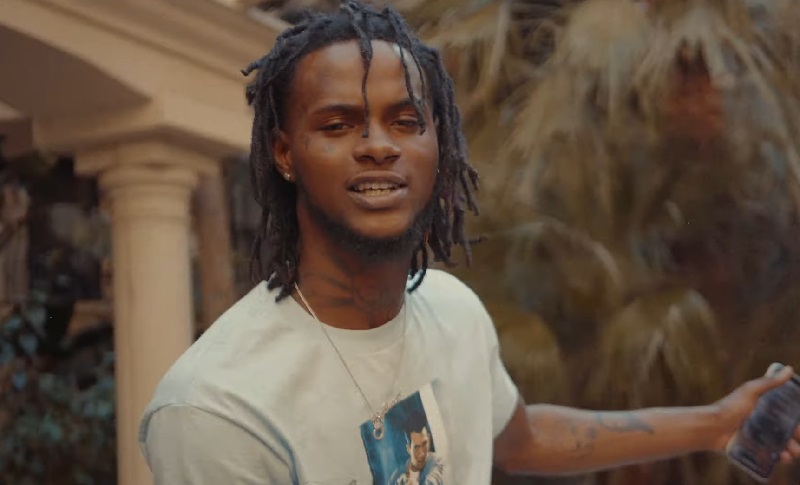
| Origin | Charlotte, North Carolina (East Coast circuit) |
| Mixtape Buzz | 10 Minutes to Live, Teen Spirit |
| Streaming Heat | Over 1 million plays per top track |
| Known For | Genre fusion, dark trap aesthetics |
| Label Status | Independent / Wave Pack Global |
BIGBABYGUCCI didn’t wait on a co-sign. He flooded SoundCloud with back-to-back mixtapes and carved out his sound before DSPs started to notice. His early work blended spacey production with confessional lyrics. He never leaned on features. He made his own momentum.
Style Bends Rules, Never Breaks Flow
He sounds like no one else on this list. His beats warp like they’re underwater. His hooks stick without sounding manufactured. There’s auto-tune, but it doesn’t cover weakness. It shapes tone. Tracks like “Blood on the Asphalt” and “Summer in 06” feel like audio journals, not marketing plans.
Niche Audience, Heavy Loyalty
He doesn’t chart on Billboard. But his shows sell out in New York, Philly, and Boston. His fans know every line. His merch moves. His social reach may not look massive, but engagement stays real. He built a cult base. And that base keeps growing.
What Defines the East Coast Sound in 2025?
The East Coast sound in 2025 no longer fits a single formula, but the foundation still holds. It starts with lyricism-dense, intentional, shaped with internal rhyme and coded detail. You hear it in Kota the Friend’s calm delivery. You feel it in J. Cole’s structural verses. The beat matters, but the pen still rules.
Boom-bap faded, but the influence remains. Producers now layer samples with trap drums, lo-fi textures, and ambient space. It’s not stuck in the past. It expands. Artists like BIGBABYGUCCI bend production into moody loops. Drill still leads in Brooklyn, with 22Gz and Sheff G keeping the pace fast and the delivery tight. But melodic pain rap holds equal weight. Lil Tjay and Rod Wave prove that emotion can carry the same punch as aggression.
The defining trait isn’t the sound itself-it’s the pressure behind it. East Coast artists rap like time’s limited. Every verse needs to hit. Every drop has to last. That urgency shapes the tone, whether it’s in an underground cut or a Billboard single.
Legacy is everywhere. You can still trace Nas in the rhythm. Still hear Biggie in the pockets. But the sound no longer lives in museums. It moves forward, pulled by new voices who know where they come from but refuse to copy the past.
The East Coast sound in 2025 does not beg for attention. It commands it by refusing to disappear.

